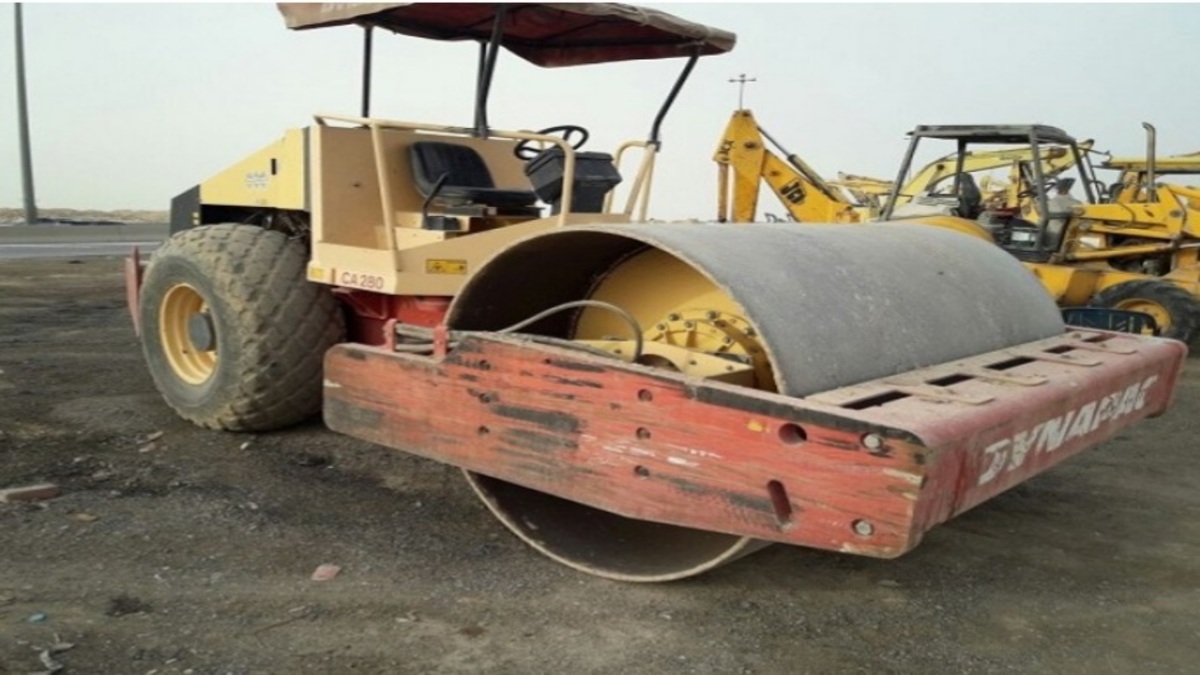Various types of rollers are used for compaction. In this post, I will describe all the types of rollers used in the construction industry.

Let us know all 20 types of rollers for compaction work.
- Smooth Drum Rollers – It is one of the most basic type of roller in construction industry.Smooth drum rollers are widly used in the field of construction. They are designed with a smooth, cylindrical drum that is used to compact soil and other materials. Smooth drum rollers are effective at achieving high levels of compaction on granular materials like sand and gravel.
- Padfoot Rollers – This type of roller is very similar to smooth drum rollers, but they have rectangular or circular pads attached to the drum. These pads are used to create a deeper compaction on cohesive soils like clay and silt.
- Pneumatic Rollers – Pneumatic rollers use rubber tires instead of a drum to achieve compaction. They are typically used for asphalt compaction and are effective at achieving a smooth surface finish.
- Grid Rollers – Grid rollers are designed with a grid-like pattern on the drum that is used to create a deeper compaction. They are commonly used for compaction on slopes and in areas with poor soil stability.
- Tamping Rollers – Tamping rollers are designed with a steel plate that is used to tamp soil into place. They are effective at achieving high levels of compaction on cohesive soils.
- Vibratory Rollers – Vibratory rollers use a vibrating drum to achieve compaction. The vibration helps to break up air pockets in the soil, allowing for a deeper compaction.
- Sheepfoot Rollers – Sheepfoot rollers have cylindrical or rectangular pads attached to the drum that resemble the feet of a sheep. They are effective at achieving compaction on cohesive soils and can be used for both shallow and deep compaction.
- Tandem Rollers – Tandem rollers have two drums that are used for compaction. They are effective at achieving high levels of compaction on granular materials like sand and gravel.
- Three-Wheeled Rollers – Three-wheeled rollers have a single drum and two wheels. They are effective at achieving compaction in tight spaces and are commonly used for compaction around pipes and utilities.
- Four-Wheeled Rollers – Four-wheeled rollers have two drums and two wheels. They are effective at achieving high levels of compaction on granular materials like sand and gravel.
- Combination Rollers – Combination rollers are designed with a smooth drum and pads or tires attached to the rear of the machine. They are effective at achieving both shallow and deep compaction.
- Oscillatory Rollers – Oscillatory rollers use an oscillating drum to achieve compaction. They are effective at achieving high levels of compaction on cohesive soils.
- Rubber-Tired Rollers – Rubber-tired rollers use rubber tires to achieve compaction. They are effective at achieving a smooth surface finish and are commonly used for asphalt compaction.
- Landfill Compactors – Landfill compactors are designed for use in landfill sites. They are effective at achieving compaction on bulky waste materials and can operate on steep slopes.
- Walk-Behind Rollers – Walk-behind rollers are small, hand-operated rollers that are commonly used for small-scale compaction projects.
- Remote-Controlled Rollers – Remote-controlled rollers are designed to be operated from a distance. They are commonly used in hazardous or hard-to-reach areas.
- Towed Rollers – A towed roller is a heavy equipment used in construction and road building to compact soil, asphalt, and other materials. It consists of a cylindrical drum or rollers mounted on a frame that can be towed behind a vehicle or tractor.
- Drum Rollers – Drum rollers have a cylindrical drum that is used for compaction. They are effective at achieving high levels of compaction on granular materials like sand and gravel.
- Plate Compactors – Plate compactors are handheld or walk-behind machines that use a vibrating plate to achieve compaction. They are commonly used for small-scale projects like paving a driveway or patio.
- Static Rollers – Static rollers are designed with a heavy, non-vibrating drum that is used to achieve high levels of compaction on cohesive soils. They are commonly used for compaction on roadways and building foundations.
